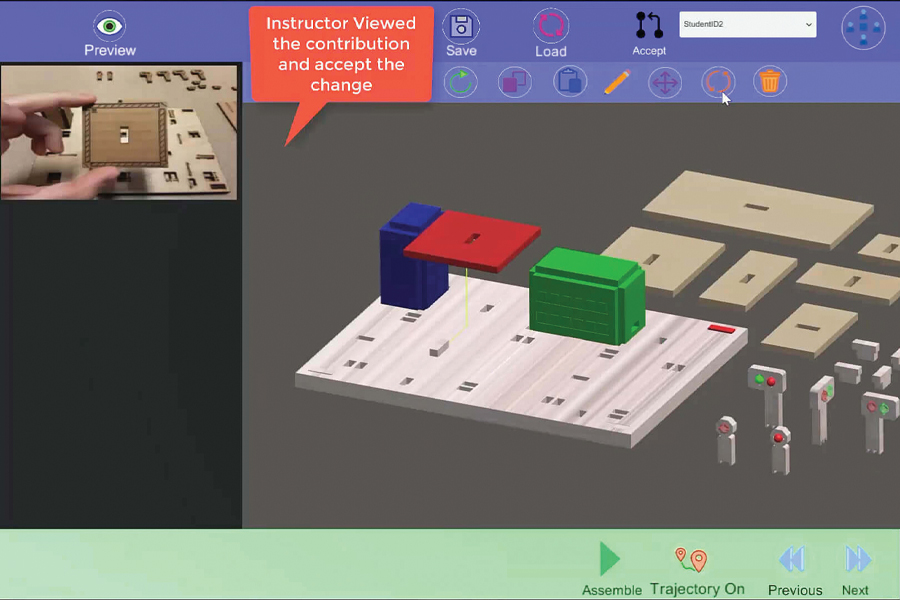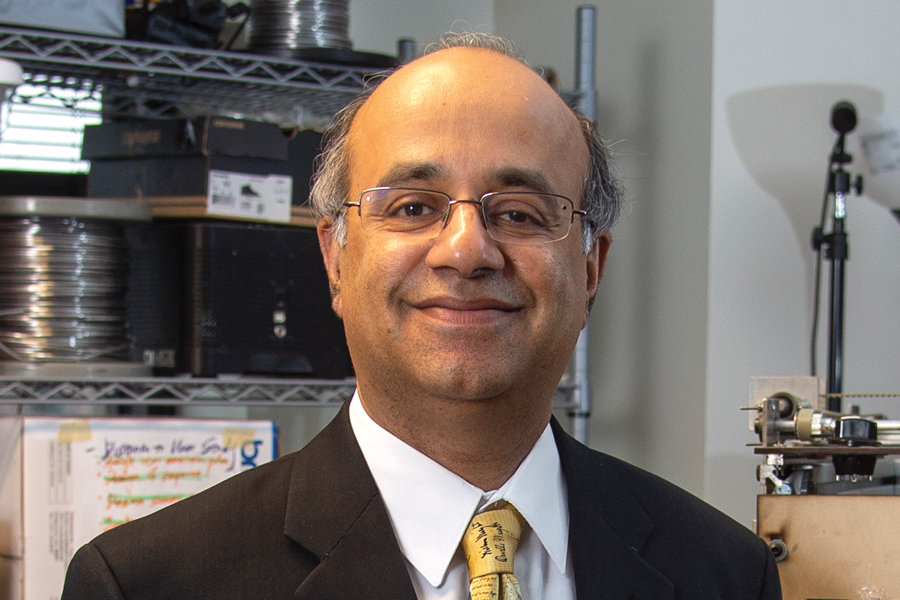
METAAR is a platform that allows educators to create their own augmented reality apps and collaborate with students remotely.
Purdue University image/Convergence Design Lab
During the COVID-19 pandemic, remote education has forced teachers to use every tool in their toolbox. But augmented reality, which allows both visual and hands-on instruction from any setting, remains out of reach for most educators.
A team led by Purdue University has built an app platform called MetaAR, enabling students and teachers to collaborate easily using augmented reality.
“Augmented reality is overlaying digital content onto the physical world,” says Karthik Ramani, the Donald W. Feddersen Distinguished Professor of Mechanical Engineering. “It can be delivered on many different devices, from a phone and a tablet, to a head-mounted display. For example, you can hold your smartphone camera up to your living room and rearrange the furniture in 3D. Or you can play a video game, and the characters show up on your kitchen table.”
Ramani believes augmented reality (AR) is still in its infancy. “We’ve seen many applications in entertainment and advertising, which basically show you some sort of action projected onto real-world settings,” he says. “But the key thing is for people to become part of the action. Augmented reality can see what you see. It can sense your hands and see how you are manipulating objects, which means AR can actually help you. It can learn from everyone, and everyone can learn from it. That’s why it’s ideal for education.”
The main roadblock, however, is authoring content. In order to use AR today, entertainment studios and big companies employ 3D artists, computer programmers and many other highly specialized software developers. Existing commercial platforms like Magic Leap and Microsoft HoloLens have not achieved mainstream availability. The cost and difficulty make it impossible for most educators to teach in AR. That’s why Ramani and his team have created MetaAR, an authoring platform that allows educators to create their own AR apps. It also allows students and teachers to collaborate remotely in AR.
“We want to make the creation of AR content as simple as creating a PowerPoint file and presenting it yourself,” Ramani says. “Using our technology platform, any instructor can easily train on MetaAR to create their own kits and lesson plans and start collaborating in a virtual classroom.”

Karthik Ramani, the Donald W. Feddersen Distinguished Professor of Mechanical Engineering
Purdue University photo/Mark Simons
Putting it to the test
For its test case, Ramani’s team built a simple STEM education kit: a small model of a city designed to teach the basics of circuit boards. Wooden pieces, like streets and buildings, had conductive material, which lit up streetlights if students assembled the “circuit” correctly. Using their MetaAR software, the researchers duplicated the pieces in 3D and formulated a simple lesson to teach students how to build the city. In the classroom, students looked at their desks through tablets, which showed them how to orient the physical pieces. It also alerted the students when they placed the physical pieces incorrectly.
MetaAR’s real magic, however, is its collaborative platform. If students had a question, they used video and images of their work to ask for help. Other students chimed in if they had a better solution and demonstrated those solutions using the virtual pieces. Instructors then integrated the students’ suggestions immediately and updated the AR content instantaneously.
“All of this happens in the cloud,” Ramani says, “which means that the teacher no longer has to physically look over the shoulder of 40 different students. Both the teacher and the students can be located anywhere and get the same hands-on education. The teacher can be present during the session, or students can learn on their own with the lesson the teacher has already authored. Students can learn at their own pace. And teachers can incorporate feedback, in real time, to improve the lab.”
Ramani was surprised at how quickly the students took to collaborating by AR. “It seems like this generation was born with this technology,“ he says. “They gave us very good feedback of what works and what doesn’t work, which helped us make our software even better.”
As remote education becomes increasingly prevalent, Ramani believes that AR can serve as a vital tool, especially for STEM education.
“The earliest way we learn things is by seeing and doing,” he says. “Now we are able to scale that up and deliver that interactive experience to anyone, anywhere. Even if it’s virtual, we want hands-on education to be hands-on.”

